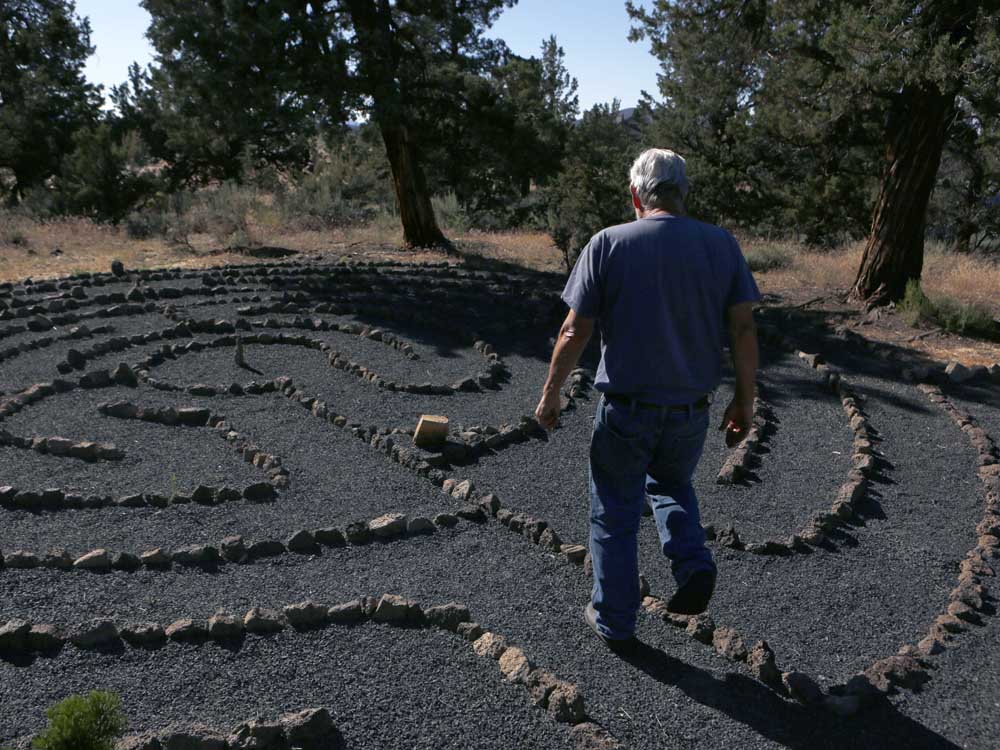Do you rock garden or do you garden in rocks?
Published 2:30 am Sunday, April 26, 2020

- A rock garden built at a Redmond home.
A rock garden purist would consider the definition of a rock garden as alpine plants that grow naturally in rocky outcrops.
The not so committed gardener would be satisfied with the definition of a collection of small and dwarf plants that look best when displayed in the scaled down landscape of a collection of rocks referred to as a rockery.
For the sake of aesthetics it is recommended that boulders from only one geologic formation be used, according to “Gardening in the Mountain West,” by Barbara Hyde. The plant communities around them would be of the same type in geological times. An example would be that lichen-covered rock, also known as moss rock, would not combine with glittering or quartz filled granite or sandstone slabs. Hyde also points out that rock gardeners (purists) pride themselves on using Latin names only when identifying their plants.
Why are so many gardeners in Central Oregon committed to our version of a rock garden? One solid reason is that some people just don’t enjoy vegetable gardening. They enjoy working the soil but don’t want the intensity of a cottage or English cutting garden.
The saying “when life gives you lemons, make lemonade” came to mind when I heard from a friend. She had discovered that under the inches of mulch installed by the builder’s landscaper were not just rocks but immovable boulders. Her lament of “what to do” is the response of many surprised at the unexpected disclosure of the camouflaged rockery outcrops natural to Central Oregon. That’s another reason why rock gardens are popular. Unless you have a dump truck and some heavy equipment, it would be very expensive to have them hauled away.
In Central Oregon, where rocks and boulders abound the standard joke is “are you a rock gardener, or do you garden in rocks”? Giving yourself a profile helps when making decisions. I am a gardener that gardens in rocks, which gives me the freedom to plant whatever I am drawn to.
Rocks can be a valuable asset in our climate of temperature instability: One day it’s T-shirts, the next day we are back to sweatshirts. The rocks absorb and hold heat, giving us the opportunity to push the USDA recommended zones just a little.
A critical design element in establishing a rockery would be avoiding perching a large rock on top of the ground. To look natural the recommendation is that one-third to one-half of the height be buried. In some cases it might be possible to dig around an existing boulder to partially expose it. The removed soil could be repurposed into altering the elevation within the planned area creating small berms for planting.
Group odd numbers of rocks — such as three or five. Grouping look best when they are of various sizes and shapes. Avoid the long straight edging row. You would never see that in nature. A curved edging to the planting bed is more natural and has more visual appeal.
Central Oregon native soil benefits with the addition of compost or other soil additives. A good tip when placing the rocks is to place them so they slope slightly backwards. Rain and irrigation will trickle back into the planting area, benefiting the plants and avoiding soil being washed away.
Plant selection generally incorporates different types of dwarf or slow -growing plants whose maximum height is between 10-12 inches.
Mat formers, (mounded plants) lend broad carpets of color and texture. Plants to be considered would be candytuft, false rock cress, dianthus, creeping phlox and creeping potentilla , among many others.
Dwarf conifers or small shrubs create height to keep the area from looking too one-dimensional. Make sure the conifer or shrub is truly dwarf and not just slow-growing.
In the fall think about adding some spring blooming bulbs. Daffodils are available in dwarf size, as are iris rhizomes.
Once established, rock gardens are relatively undemanding and can be designed for multiseasonal interest.








